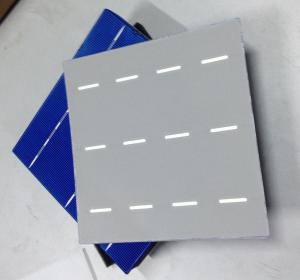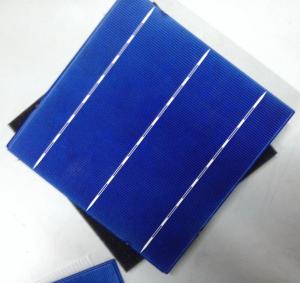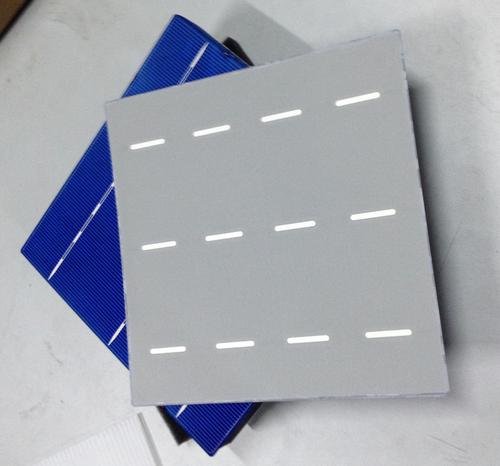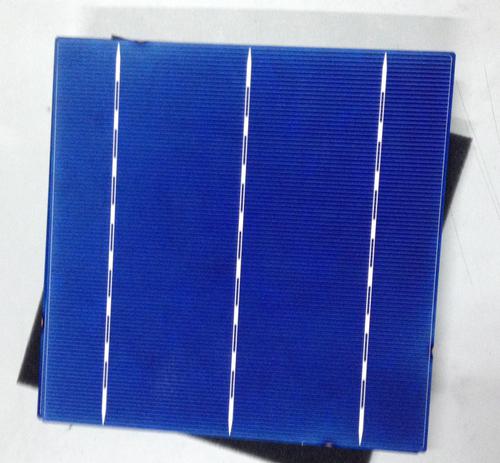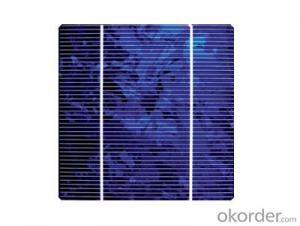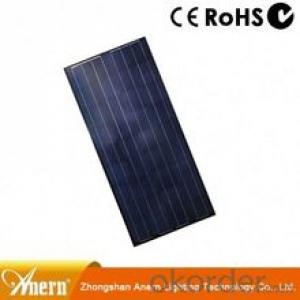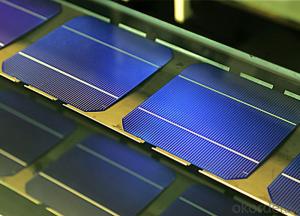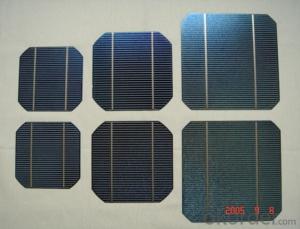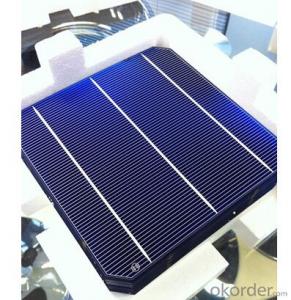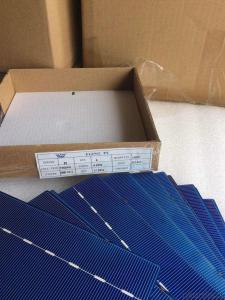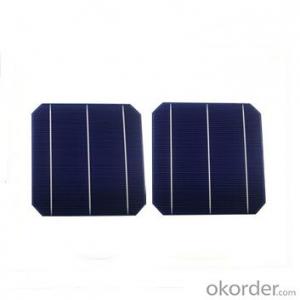Purchase Solar Cells Bulk - World-Beating 25-Year Life, 17.6% Efficiency
- Loading Port:
- Shanghai
- Payment Terms:
- TT OR LC
- Min Order Qty:
- 1000 pc
- Supply Capability:
- 5000000 pc/month
OKorder Service Pledge
OKorder Financial Service
You Might Also Like
Brief Introduction of Solar Cells
A solar cell, is an electrical device that converts the energy of light directly into electricity by the photovoltaic effect, which is a physical and chemical phenomenon. It is a form of photoelectric cell, defined as a device whose electrical characteristics, such as current, voltage, or resistance, vary when exposed to light. Solar cells are the building blocks of photovoltaic modules, otherwise known as solar panels.
Introduction of our Company
Our core business is the design and manufacture of III-V epitaxial material used in cellular phones and other wireless devices, and the design and manufacture of solar cells and solar sheets for a variety of applications, including unmanned aerial vehicles (UAVs), spacecraft, and terrestrial collectors.
Founded in 2000, we are well equipped to conduct its business. The company occupies a 30,000 square foot facility in Niles, a northern suburb of Chicago, Illinois. The facility contains a clean room and device fabrication and test laboratory. We own all the tools and equipment necessary to grow, fabricate, and test epitaxial material and solar cells and sheets. The company owns a set of metalorganic chemical vapor deposition (MOCVD) tools capable of high volume production. We also possess the tools and equipment required to fabricate and test semiconductor device structures and solar cells.
We are dedicated to producing quality products to meet customer needs. We are an ISO 9001-certified company. Production begins only after we are sure that all required customer specifications have been met. In order to ensure the quality of our products, we employ sophisticated quality control processes.
We prides itself on the quality of its employees. Some members of our technical staff are among the world’s foremost experts in the growth and processing of GaAs- and InP-based electronic devices and solar cells. Our staff supports customers, not only during the product development period, but also during production in order to enable continuing improvements in final product performance and yield.
We also performs contract research and development. Since 2003, we have been a prime federal contractor on more than thirty programs to develop solar cells, transistors, and lasers. A key result of this innovation has been the development of the epitaxial lift-off (ELO) process, which uses in its line of solar cell and solar sheet products. We have also supported other companies in the performance of their research and development programs. Many of the innovations developed at our have been incorporated into commercial products.
Specifications of Polycrystalline Solar Cells
Format : 156 mm × 156 mm ± 0.5 mm
Thickness: 210 μm ±40 μm
Front (-) : 1.5mm bus bars (silver),blue anti-reflection coating (silicon nitride)
Back (+) : 2.5mm wide soldering pads (silver) back surface field (aluminium)
Efficiency (%) | Pmpp (W) | Umpp (V) | Impp (A) | Voc (V) | Isc (A) |
18.00% | 4.38 | 0.528 | 8.291 | 0.631 | 8.869 |
17.80% | 4.33 | 0.525 | 8.252 | 0.629 | 8.821 |
17.60% | 4.29 | 0.532 | 8.053 | 0.633 | 8.541 |
17.40% | 4.23 | 0.528 | 8.092 | 0.624 | 8.632 |
17.20% | 4.19 | 0.524 | 7.992 | 0.62 | 8.458 |
17.00% | 4.14 | 0.52 | 7.972 | 0.623 | 8.5 |
Advantage of Polycrystalline Solar Cells
1. Tire-1 Solar Cells’ Manufacturer Quality Guarantee. With a complete and sophisticated quality government system, our Quality Management have arrived world’s leading place. Customer can receive Tire-1 Cells Maker’s Quality Standard Products.
2. Trusted Warranty. We can supply trusted after-sales service to our customer. If our cells are found not in conformity to the specification of manufacturer, or should the inspected quantity found in shortage, or should the packing found damaged, the buyer has the right to claim to the seller. The claim, if any, should be presented to seller within 30 days after cargo's arrival date to the port, together with related inspection report and photos issued and provided by a reputable independent surveyor such as SGS.
3. World’s Leading Manufacturer Equipment. We imported the newest and leading production equipment from abroad. Advanced equipment can guarantee the stable quality of cells. Auto production line can also save labor cost which will further cut our production cost.
4. Bulk supply: With the production capacity of 500MW, we can produce large quantity every month. This can satisfy most customer requirement.
Usage of Polycrystalline Solar Cells
Solar cells are often electrically connected and encapsulated as a module. Photovoltaic modules often have a sheet of glass on the front (sun up) side, allowing light to pass while protecting the semiconductor wafers from abrasion and impact due to wind-driven debris, rain, hail, etc. Solar cells are also usually connected in series in modules, creating an additive voltage. Connecting cells in parallel will yield a higher current; our solar cells have passed IEC Certification. With high and stable quality, our cells can greatly improve the performance of Solar Modules.
Applications of Polycrystalline Solar Cells
Assemblies of photovoltaic cells are used to make solar modules which generate electrical power from sunlight, as distinguished from a "solar module" or "solar panel". A solar array generates solar power using solar energy.
Packaging & Delivery of Polycrystalline Solar Cells
Carton Box Package and Deliver by air. It should be noticed that it should be avoid of water, sunshine and moist.
Factory Picture of Solar Cells
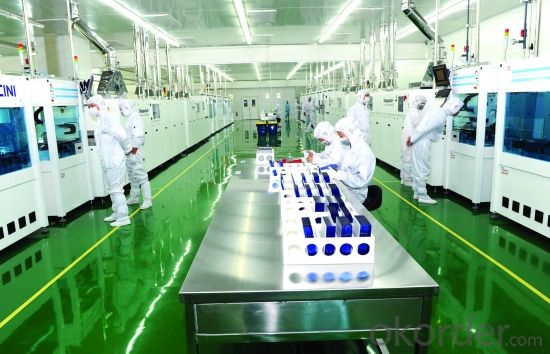
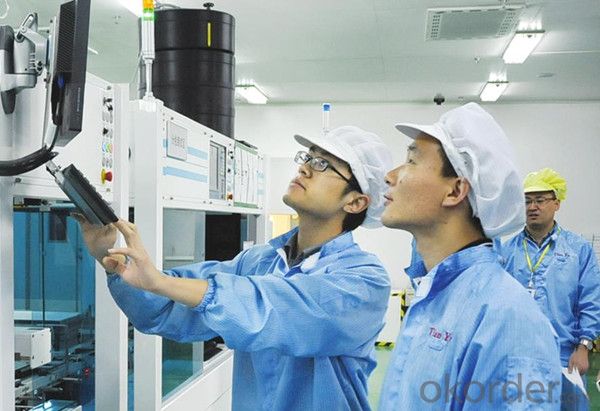
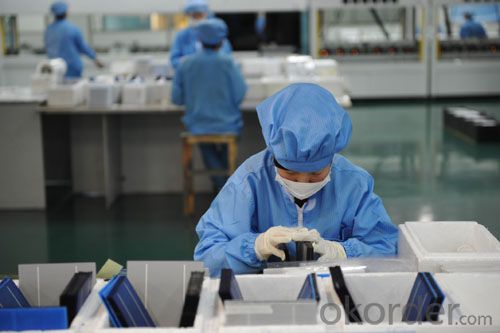
Package Picture of Solar Cells
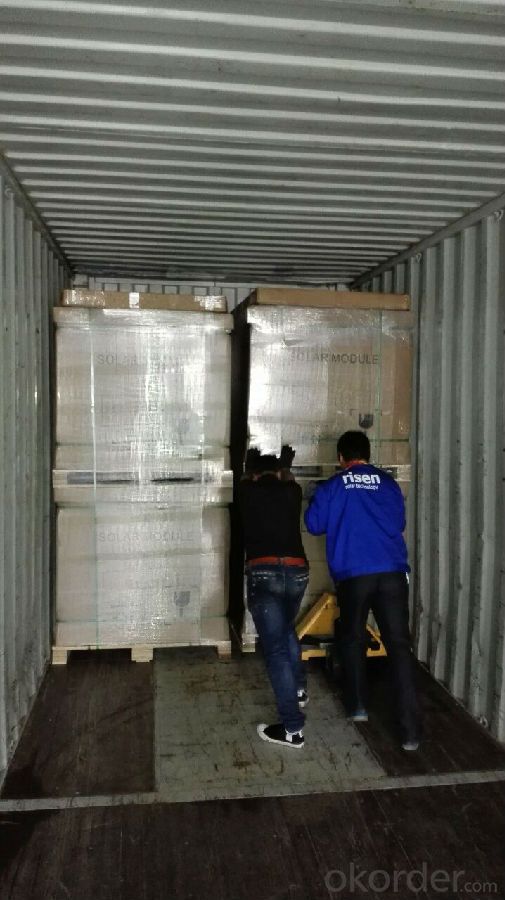
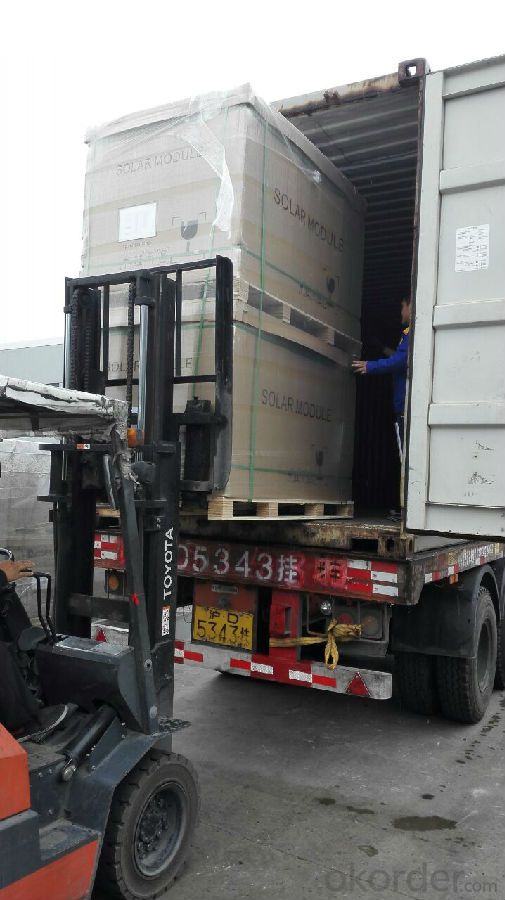
FAQ
We have organized several common questions for our clients,may help you sincerely:
1. What’s price per watt?
A: It’s depends on the quantity, delivery date and payment terms of the order. We can talk further about the detail price issue. Our products is high quality with lower price level.
2. Can you tell me the parameter of your solar cells?
We have different series of cells with different power output, both from c-si to a-si. Please take our specification sheet for your reference.
3. How do you pack your products?
We have rich experience on how to pack the panels to make sure the safety on shipment when it arrives at the destination.
4. Can you do OEM for us?
Yes, we can.
5. How long can we receive the product after purchase?
In the purchase of product within three working days, We will arrange the factory delivery as soon as possible. The perfect time of receiving is related to the state and position of customers. Commonly 7 to 10 working days can be served.
- Q: What are the tin bands, sinks and interconnections used on solar modules, and what are the solar cells used in the solar cells?
- At present, the general crystal silicon cells using p-type silicon, in the phosphorus diffusion process, the two sides of the silicon and the edge will be phosphorus doping.
- Q: Can solar cells be used in sports stadiums?
- Yes, solar cells can be used in sports stadiums. They can be installed on the roof or integrated into the design of the stadium to capture solar energy and convert it into electricity. This renewable energy source can help power lighting, scoreboards, and other electrical systems, making sports stadiums more sustainable and reducing their carbon footprint.
- Q: Can solar cells be used in recreational vehicles?
- Yes, solar cells can be used in recreational vehicles. They are a popular and effective solution for powering various systems in RVs including lighting, appliances, and electronics. Solar panels can be mounted on the roof of an RV to harness sunlight and convert it into electricity, providing a reliable and sustainable source of power while on the road or during camping trips. Additionally, solar cells offer the advantage of being environmentally friendly and reducing reliance on traditional energy sources.
- Q: What is a monocrystalline Silicon Solar Cells?
- A monocrystalline Silicon Solar Cell is a kind of solar cell made of monocrystalline siclicon that has been used for many years. Because it is used in a way that is very unique in their use of a single, very pure crystal of silicon, It is considered to good for longevity.
- Q: Can solar cells be used in powering communication networks?
- Yes, solar cells can be used to power communication networks. Solar cells convert sunlight into electricity, which can then be used to power various devices and systems, including communication networks. This makes solar energy an environmentally friendly and sustainable option for powering these networks, especially in remote or off-grid locations where access to traditional power sources may be limited.
- Q: What is the impact of solar cells on reducing noise pollution from power generation?
- Solar cells have a minimal impact on reducing noise pollution from power generation since they operate silently, unlike traditional power plants that emit noise during operation.
- Q: Can solar cells be used for powering space missions?
- Yes, solar cells can be used for powering space missions. Solar cells convert sunlight into electricity, providing a reliable and sustainable power source for space exploration. They have been extensively used on spacecraft and satellites to generate electricity for various systems and instruments.
- Q: Can solar cells be used to power remote wildlife monitoring systems?
- Yes, solar cells can be used to power remote wildlife monitoring systems. Solar cells convert sunlight into electricity, providing a sustainable and reliable power source for monitoring equipment in remote areas where access to the electrical grid may be limited or unavailable. This allows for continuous operation of the monitoring systems without the need for frequent battery replacements or reliance on fossil fuels.
- Q: How do solar cells perform in areas with high levels of pollen?
- Solar cells can be affected by high levels of pollen in certain ways. Pollen, when accumulated on the surface of solar panels, can reduce their efficiency by blocking sunlight from reaching the cells. This reduction in efficiency can result in a decrease in the overall energy generation of the solar panels. Hence, it is important to regularly clean and maintain solar panels in areas with high pollen levels to ensure optimal performance.
- Q: Can solar cells generate enough electricity to power an entire house?
- Yes, solar cells have the ability to generate enough electricity to power an entire house. The size and efficiency of the solar panel system, along with the energy consumption of the house, are important factors in determining if it can meet the household's electricity needs. However, with advancements in technology and larger solar installations, it is increasingly possible for solar cells to generate sufficient electricity to power a house.
Send your message to us
Purchase Solar Cells Bulk - World-Beating 25-Year Life, 17.6% Efficiency
- Loading Port:
- Shanghai
- Payment Terms:
- TT OR LC
- Min Order Qty:
- 1000 pc
- Supply Capability:
- 5000000 pc/month
OKorder Service Pledge
OKorder Financial Service
Similar products
Hot products
Hot Searches
Related keywords
